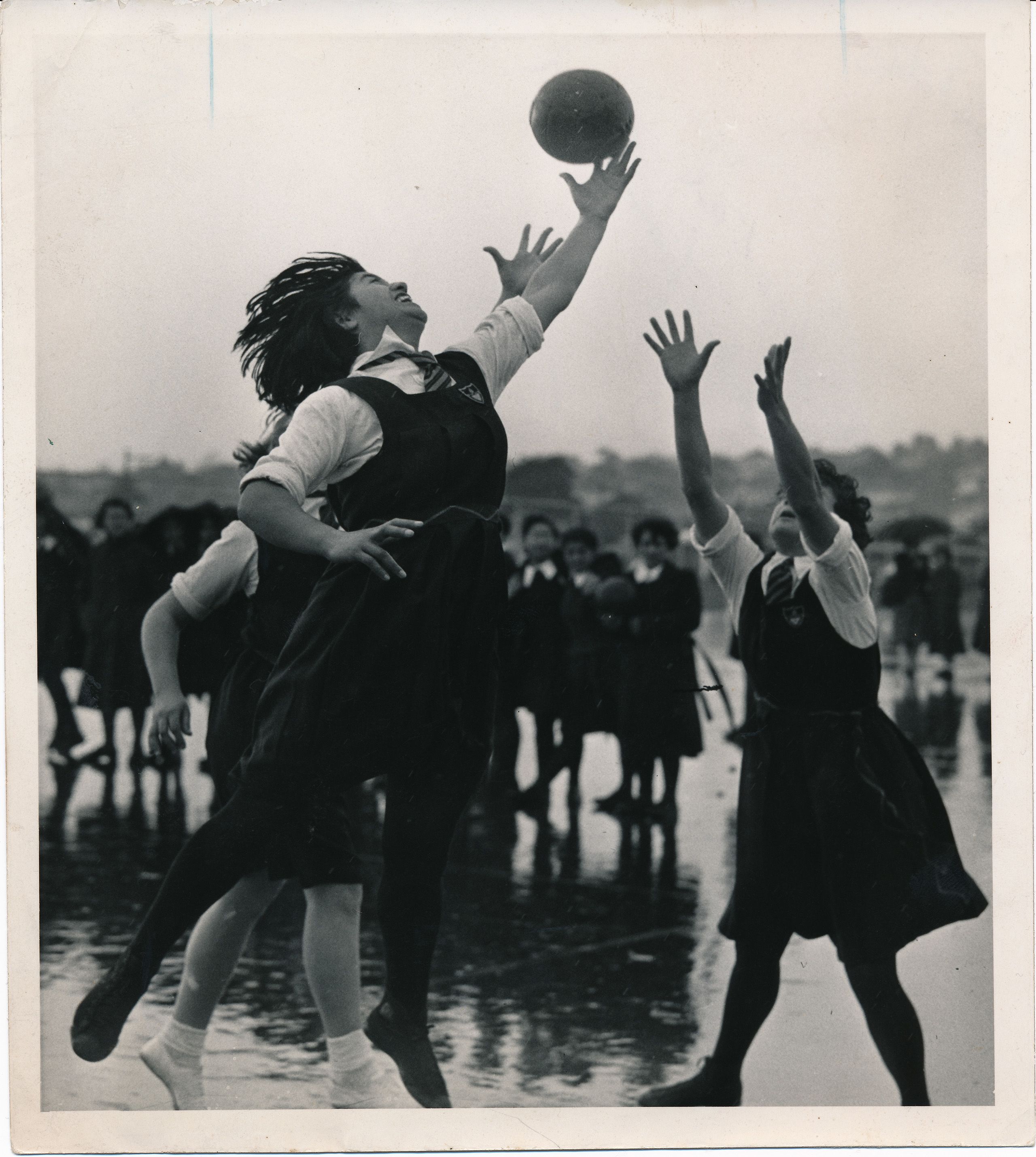Our game
turns 100
Paying tribute to the pioneers of New Zealand netball


Netball has been the number one game for girls and women in New Zealand for a century, but we haven’t known much about its early history, until now.
Played, coached, managed and loved by women and girls in Aotearoa for more than 100 years, netball is celebrating its centenary with an exhibition at the Auckland Museum, which draws on original research by Dr Margaret Henley from the University of Auckland.
A lecturer in communication in the Faculty of Arts, Henley also researches women’s sport and social history and, as part of a Marsden-funded project with University colleague Professor Toni Bruce, has been digging deep into archives and talking about netball to players, fans and administrators of all ages around the country.
It’s a game she has a keen interest in as a fan and former player, but also for its unique position as a traditionally women-only sport, which achieved national status on its own merit, and was created by a female-driven volunteer work force.
Left: St Luke's Ladies Bible Class team playing 'basketball' in the Auckland Domain, 1908. Photo: Canterbury Times, 2 September 1908

One aspect of the work she’s found most rewarding has been researching and writing profiles of the women who were the pioneers of the sport.
This has involved connecting with the direct descendants of some of the key women such as the first president, Irene McInnes, and vice president, Myrtle Muir, who both founded the New Zealand Basketball Association in 1924 (now Netball New Zealand), in part to standardise some of the rules whose varied nature was making it hard for neighbouring teams to play each other.
“I also found out about Margaret Matangi (Te Atiawa, Taranaki, Ngāti Mutunga), who captained the first national team in 1938, and Jessie Knapp who was the first netball (then confusingly called ‘basketball’) coach in New Zealand as verified through official government documents,” says Henley.
Knapp introduced a very early form of the game to Wanganui Girls’ High School in 1898. It was initially played on fields, and eventually on school tennis courts in winter, as these spaces were the only areas uncontested by boys and men for their own recreational use.
“Jessie Knapp’s efforts were mentioned very favourably in annual headmistress’s reports, and the sport itself noted in the official Ministry of Education School Inspector’s reports, submitted to parliament 1898-1900,” says Henley.
She was delighted to discover Knapp’s introduction of the game to the country predates, by eight years, the widely held belief that it was brought here by a Rev JC Jamieson, through the Presbyterian women’s bible class movement, in 1906.
“Jessie Knapp has a University of Auckland connection through Kate Edger, the first woman in New Zealand to earn a university degree,” she says.

The St Luke's 1906 team, based in Remuera, Auckland.
The St Luke's 1906 team, based in Remuera, Auckland.
During her time as headmistress at Nelson Girls’ College, Kate and her sister Lilian tutored Knapp in English, French, German, Latin, maths, history and political economy, as well as the interestingly named ‘mental science’.
She graduated in 1891, aged only 19, with a BA and then trained as a teacher, one of the few career options open to academic women at the time. Henley says that by introducing her pupils to the “exciting new game for women”, as the newspapers of the time breathlessly reported, Jessie also proved the game was not first brought into the state school system by an English trained teacher, but by a New Zealand-born and tertiary-educated woman, who defied many culturally imposed gender limitations of her era.
“One of the most rewarding, and at times emotional, aspects of engaging with the descendants of women such as Jessie is that the living relatives often don’t know the extent of what these women in their family achieved,” she says.
Netball (in its first guise as women’s basketball) quickly displaced hockey as the game for women in this country and ushered in some great improvements in the lives of girls and women, says Henley, not the least of which was the uniform.
“For the first time, players could wear a shorter, pleated woollen tunic, which was a very liberating garment because it fitted all shapes and sizes, didn’t require a corset and allowed complete, unrestricted movement. Except when it rained, and then you would smell like a sheep!”
For Henley, discovering these women’s stories, which have either never been told or are largely unknown in the public sphere, has been the central focus of her research. “These women were a second wave of ‘silent feminists’ who fervently believed in creating a safe and fulfilling recreational opportunity for young adult women in between leaving school and getting married.
“They would never have thought of themselves in feminist or ground-breaking terms, but as they increasingly engaged in volunteer work outside of their narrow domestic sphere, they created a lasting netball legacy, the essence of which is captured in the Auckland Museum exhibition.
Left: 1932 New Zealand netball tournament held in Invercargill.

“These women were a second wave of ‘silent feminists’ who fervently believed in creating a safe and fulfilling recreational opportunity for young adult women in between leaving school and getting married."
“They would never have thought of themselves in feminist or ground-breaking terms, but as they engaged in volunteer work outside their narrow domestic sphere, they created a lasting netball legacy.”



